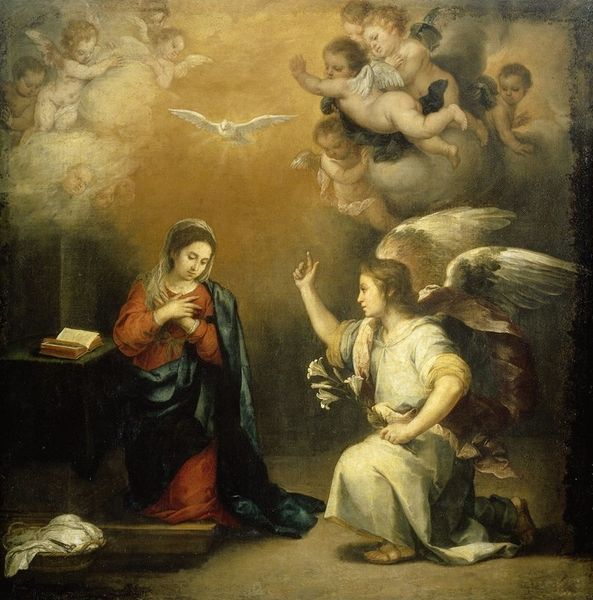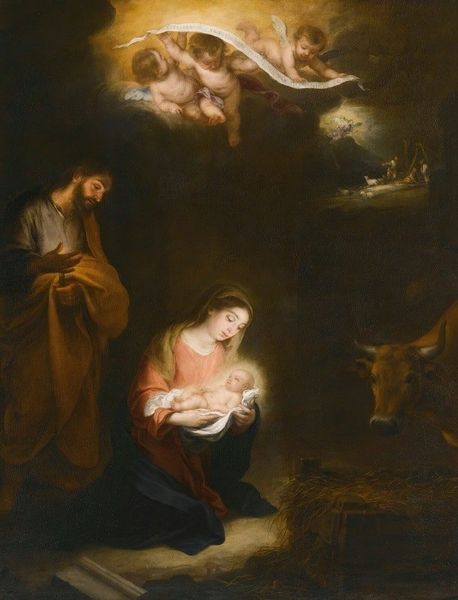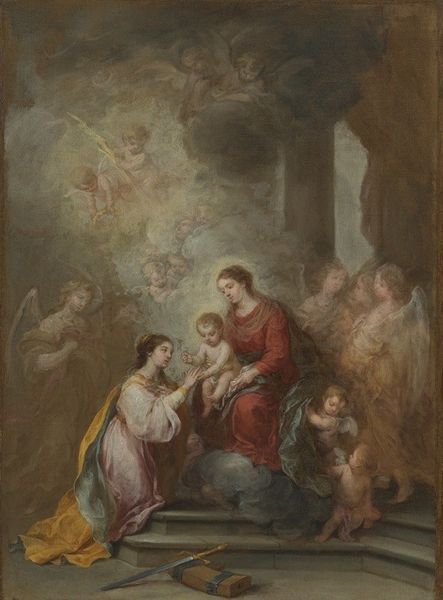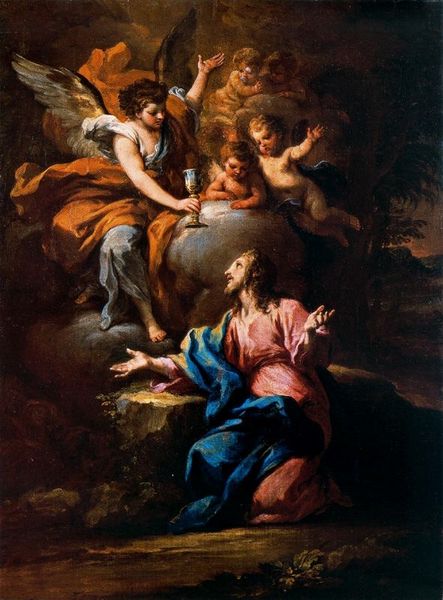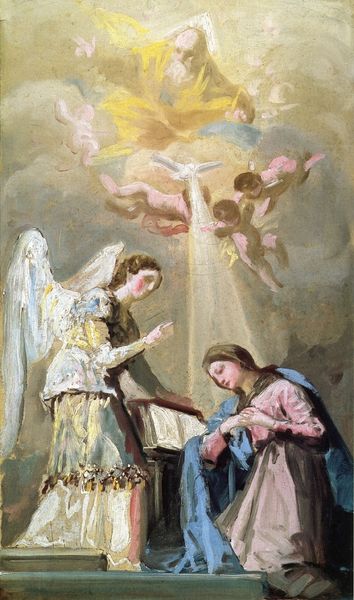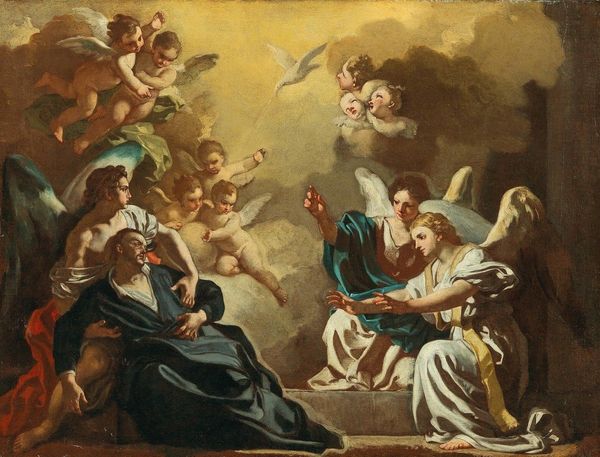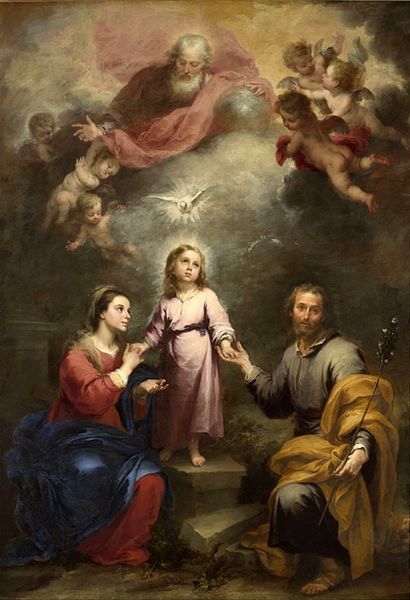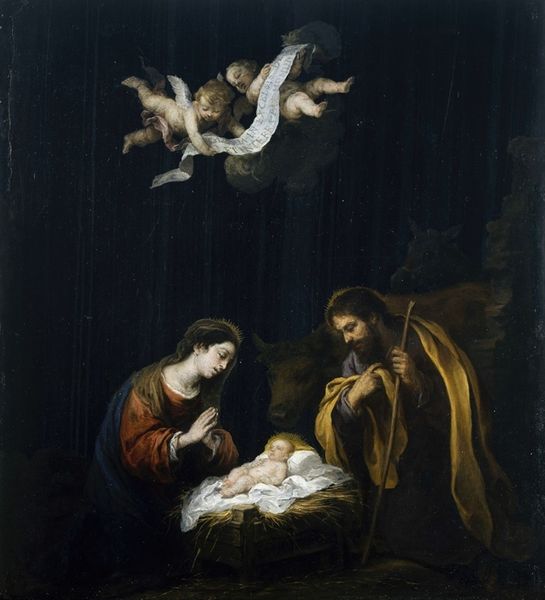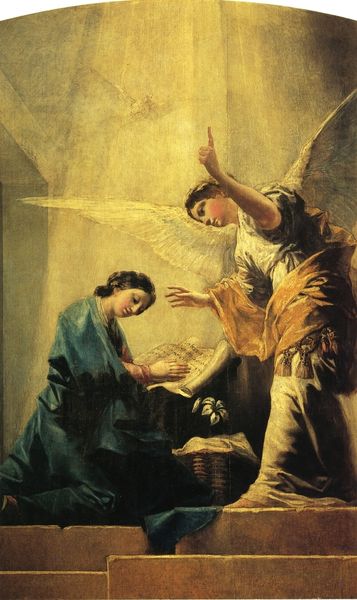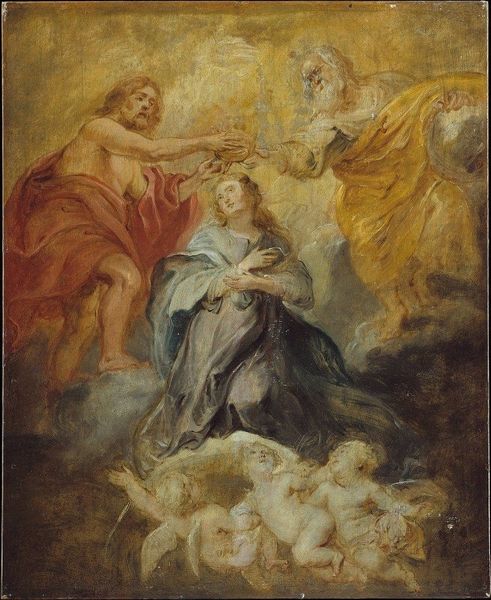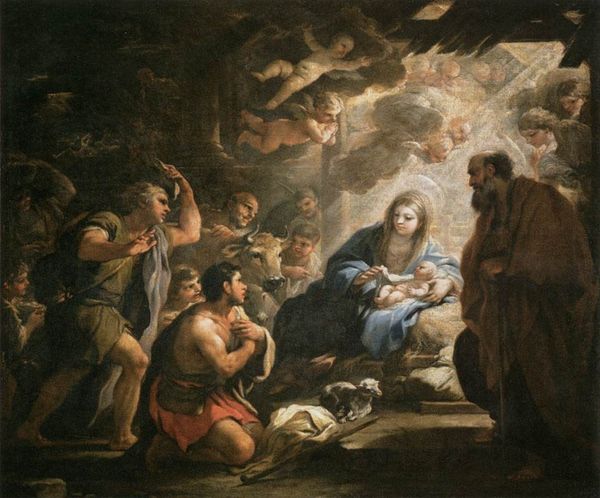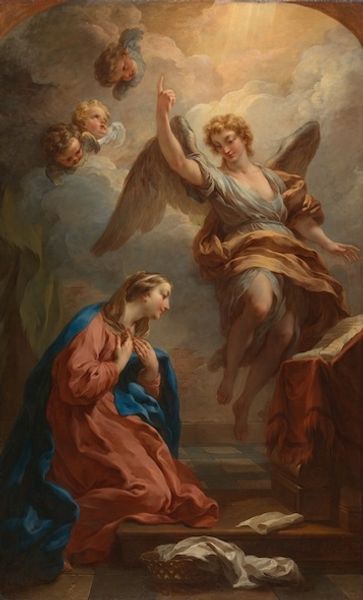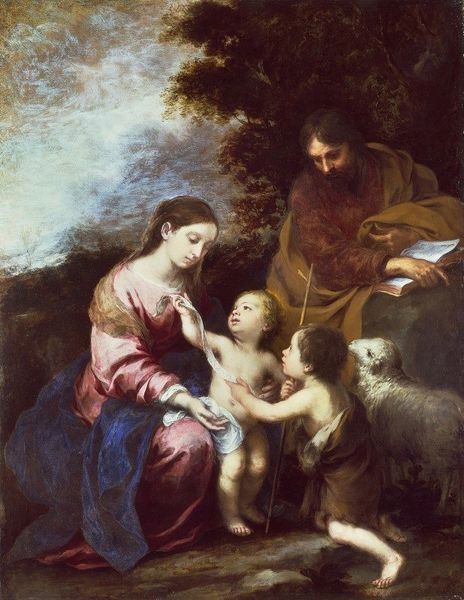
painting, oil-paint
#
portrait
#
narrative-art
#
baroque
#
painting
#
oil-paint
#
figuration
#
oil painting
#
history-painting
Copyright: Public Domain: Artvee
Curator: Take a look at "The Annunciation" by Bartolomé Esteban Murillo, created around 1665 to 1670, using oil on canvas. What is your initial impression? Editor: There is an immediate sweetness to it, an ethereal softness. It is as if a vision has been made tangible, with swirling light and muted, almost pastel tones. The composition feels traditional, almost rigidly so. Curator: Murillo often addressed religious subjects in his artistic production. The Baroque style is prominent; note how the dramatic use of light and shadow guide our eyes. But how might Murillo’s process have engaged with contemporary material realities? Editor: That's interesting. Consider the context—Spain's complex relationship with the Catholic church, and its reliance on sacred imagery. Paintings like these, with their accessible visual language, become tools. The widespread production of such pieces indicates a highly structured workshop system. Who were the hands producing these for mass consumption? Curator: Exactly! Murillo ran a significant workshop. He hired apprentices, and materials acquisition for that size atelier must have been intensive. What can we say about its construction, then? Let’s talk about colour. How are pigments deployed and constructed in layers on the canvas to create an airy atmosphere? Editor: Well, formal analysis highlights the painting's colour palette: Mary is painted in bold blues and reds, symbolising humility, passion and royalty; these contrast beautifully with the shimmering gold tones enveloping Gabriel and the cherubic faces above. It gives the image dynamism by harmonising colours which gives visual pleasure while conveying this deep, theological significance through established symbols. Curator: And then what about the dove of the Holy Spirit? Do you view it only as a religious emblem? Or might the materiality of that specific pigment, perhaps imported and rare, signal broader economic and cultural exchanges? Murillo could be engaging directly with questions of craft, labour and the artist's socio-economic positioning, but also pointing toward Spain’s global ambitions. Editor: A fair point! And while your argument certainly roots the image in tangible contexts, perhaps my formal read elucidates the intention? The structure, colour and composition work seamlessly to evoke the mystery of the divine moment. Each element serves the other in building towards this emotive, iconic narrative. Curator: Indeed. Through analysing its materials and construction methods within Spain's Baroque art economy, and in considering formal devices that construct its overall spiritual meaning, "The Annunciation" reveals layers of meaning about craftsmanship and faith. Editor: And by studying the picture’s forms, and use of well-established symbolism, this composition provides direct access to transcendent narrative experiences for those open to engage deeply within them.
Comments
No comments
Be the first to comment and join the conversation on the ultimate creative platform.
